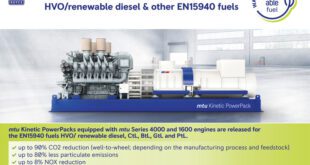SHALE-RELATED CONSTRUCTION BOOM IN 2014 MEANS GREENHOUSE GAS EQUIVALENT OF 12 NEW
Because of cheaper fuel prices driven by the shale drilling boom, U.S. companies in 2014 received draft or final permits to build at least 46 new or expanded petrochemical facilities across the U.S. that will produce 55 million tons of greenhouse gases a year, according to a new report by the Environmental Integrity Project. That’s the equivalent of 12 new coal-fired power plants (500 megawatt) operating at full capacity.
These major construction projects include large mid-stream compressors, plants that process gas or shale oil into fuel or feedstock, and chemical and fertilizer manufacturers. Projects launched within these sectors over the past three years will increase greenhouse gas emissions by more than 130 million tons annually, based on estimates in 105 draft or final permits and 15 applications still pending. That is equivalent to the global warming output of 28 new coal burning power plants.
The new report, “Blowback from the Shale Boom,” is based on Clean Air Act permitting documents on file with the U.S. Environmental Protection Agency and state regulators.
“The shale gas boom has helped revive U.S. manufacturing, but we need a full and honest accounting of its environmental footprint,” said Eric Schaeffer, Executive Director of the Environmental Integrity Project and author of the report. “That accounting should include greenhouse gases from petrochemical industries that are taking advantage of lower fuel and feedstock costs.”
“A problem as complex and massive as climate change requires all sectors of the economy to contribute toward the solution, including the oil and gas industry and the chemical and fertilizer factories that are enjoying a renaissance because of hydraulic fracturing,” said Schaeffer, former Director of Civil Enforcement at EPA. “The good news is that operating more efficiently can reduce greenhouse gas pollution, and it is good for both the global climate and a company’s bottom line.”
Over the last three years, the largest numbers of the plant constructions and expansions related to the shale gas industry have been in Texas (49), Louisiana (33) and Oklahoma (6). But a scattering of projects are also located in other states across the U.S., including in Alaska, Arizona, Colorado, Florida, Georgia, Iowa, Idaho, Illinois, Indiana, Kansas, Maryland, Michigan, Minnesota, Mississippi, North Dakota, New Mexico, Oregon, Pennsylvania, Tennessee, Utah, West Virginia, and Wyoming. (See the Excel Spreadsheet included with report for a full listing of the greenhouse gas permits and permit applications from 2012 through 2014).
Since January 1, 2014, companies have applied for or received permits for 57 new oil, gas, or chemical projects that would produce more than 71 million tons a year of greenhouse gases (as expressed in carbon dioxide equivalent tons), according to permitting documents.
The sector that may have experienced the sharpest growth because of the shale boom recently is the chemical industry, with 22 major projects proposed or approved in 2014. These new projects will release 27 million tons of greenhouse gases a year from plants that will produce or use petroleum-based ingredients to make plastics and other products.
Much of the construction of new chemical factories is in Texas and Louisiana. But it is also happening in Beaver County, Pennsylvania, and Wood County, West Virginia, where companies are planning to build facilities that crack ethane, a component of natural gas, and process it into ethylene, a building block for a wide range of chemicals including solvents, plastics, and antifreeze solutions.
The natural gas industry obtained permits or submitted new applications for 16 major projects in 2014 that would release a combined total of 17 million tons of greenhouse gases from compressor stations and other units that remove impurities, or separate gas from petroleum liquids. All but one of these projects received draft or final permits, and most are in Louisiana and Texas. But a plant to process natural gas products into propane and butane is also planned in Adams County, Mississippi, and a natural gas processing facility is proposed in Clare County, Michigan.
The fertilizer industry secured permits for eight new or expanded plants in 2014 that are authorized to emit 10.4 million tons of greenhouse gases, mostly to produce nitrogen-based fertilizers used on corn, soybeans, and other crops. The manufacture of nitrogen fertilizer releases nitrous oxide, which EPA estimates to be 310 times more potent as a greenhouse gas than carbon dioxide. In 2014, large nitrogen fertilizer factories were approved in Posey County, Indiana; Lee County, Iowa; Tuscola, Illinois; Ascension Parish, Louisiana; Garfield, Oklahoma; Greene County, Tennessee; and American Falls, Idaho.
Oil and gas refineries proposed five construction or expansion projects in 2014 that will emit almost three million tons of greenhouse gases. The projects are in Texas, Louisiana, Illinois, and Oklahoma. Two have final permits, one is in draft form, and two applications are still pending.
Companies also applied or received permits for four liquid natural gas (LNG) plants to condense and export the fuel in 2014. These plants, which super-cool methane to its more dense liquid form, would produce 11.6 million tons of the heat-trapping gases, according to their permit applications. Three of these LNG projects would be on the Gulf Coast, in Texas and Louisiana. But Maryland’s Public Service Commission also approved a controversial project to export liquid natural gas from a terminal on the Chesapeake Bay in Calvert County, Maryland.
The report concludes that companies can reduce their greenhouse gas emissions in cost-effective ways –such as by avoiding wasted energy and stopping leaks from pipes and valves. These methods save money through more frugal use of energy or raw materials.
A copy of the full report and list of projects is available here: http://environmentalintegrity.
 Alternative Energy HQ solar power for homes, wind energy, and bio fuel issues
Alternative Energy HQ solar power for homes, wind energy, and bio fuel issues


 EPA: Coal plants should spend $2B to cut emissions
EPA: Coal plants should spend $2B to cut emissions




